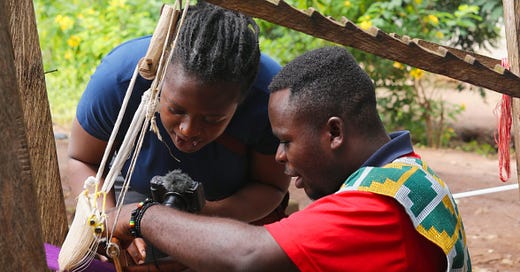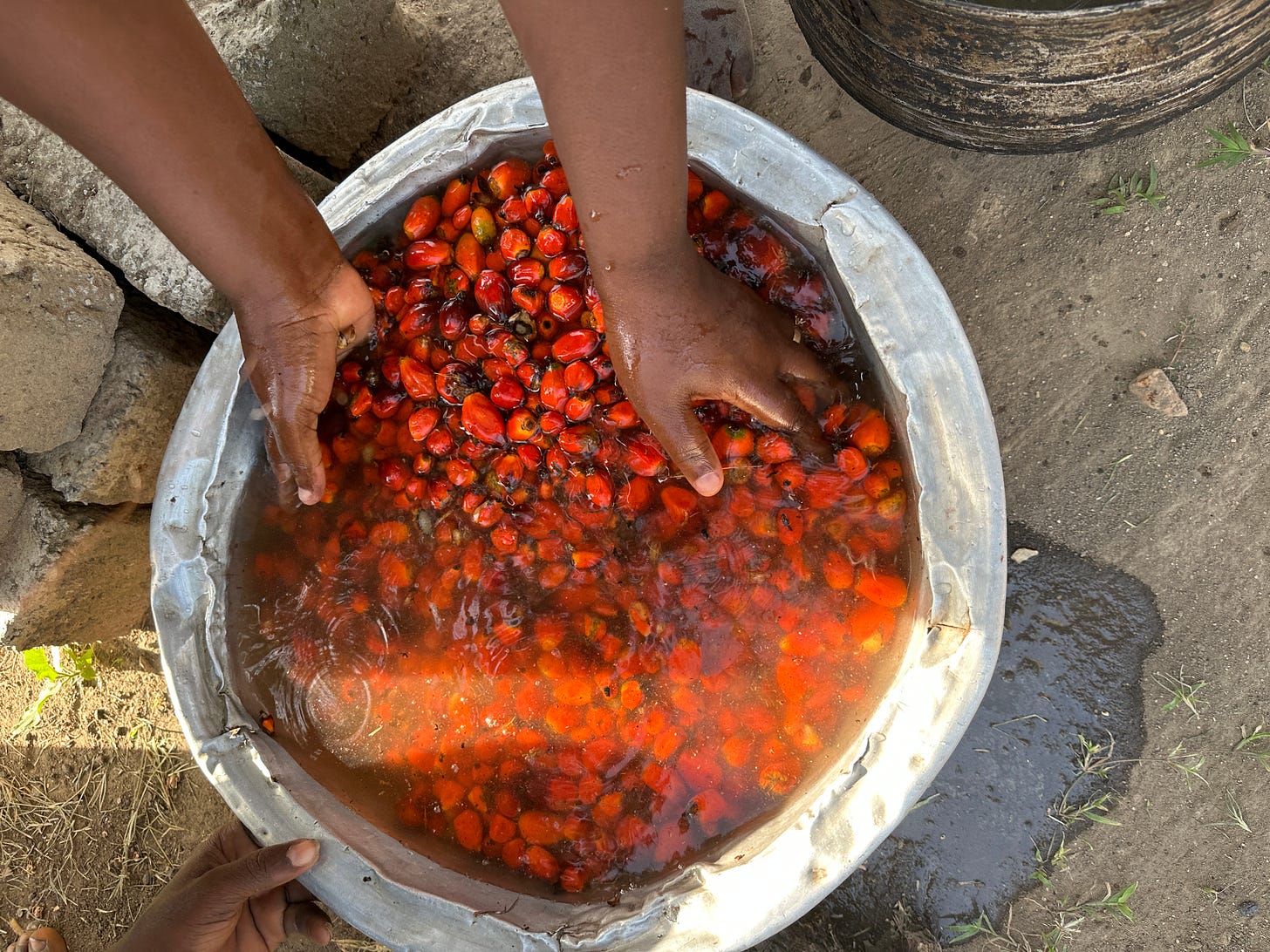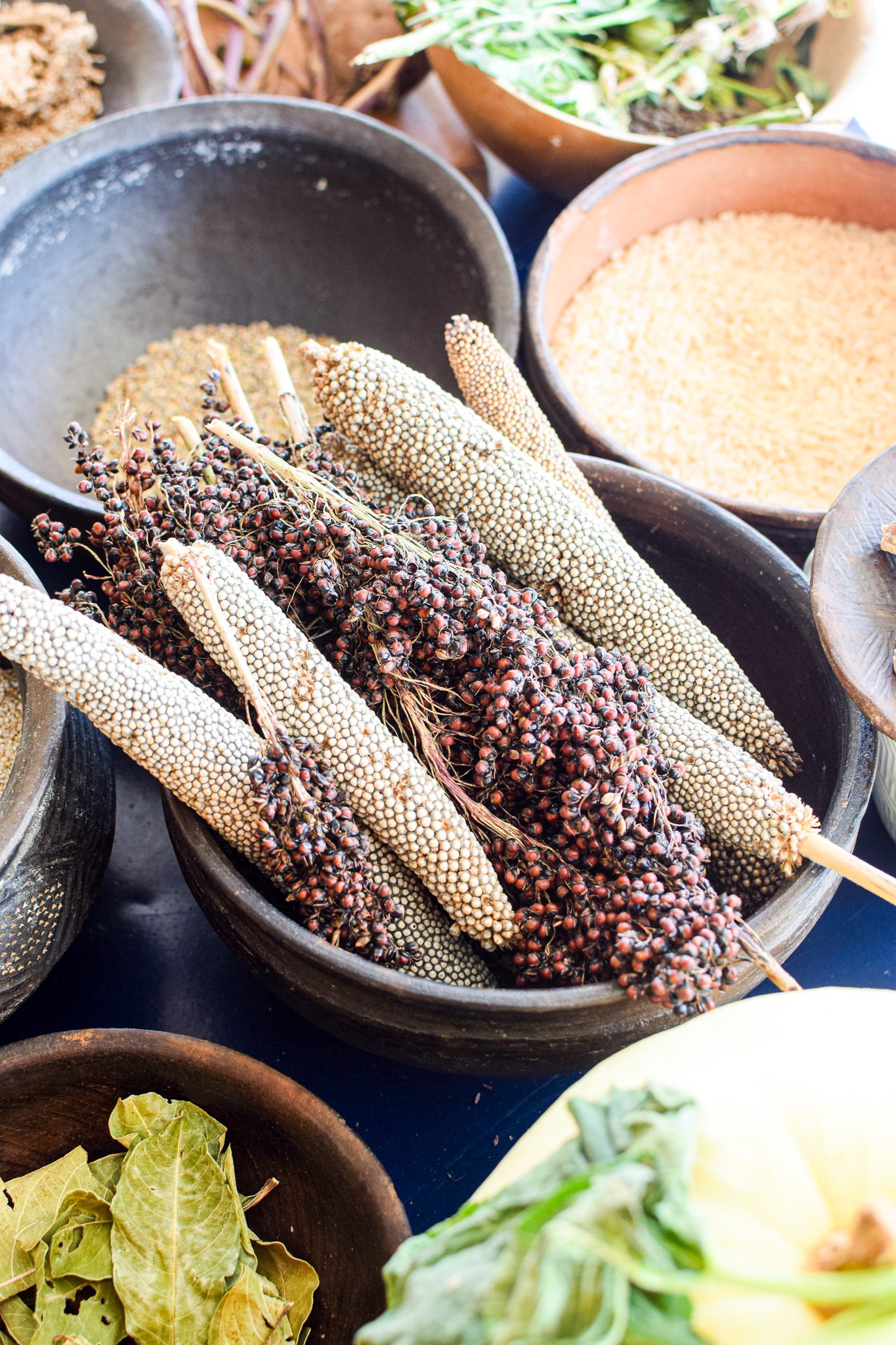It's not always in the writing.
Documenting the intersection of foods from across West Africa with culture and history is not an easy feat. There are many times I lament about the lack of written text, curse the British for burning down the Asante palace, including its extensive library, and am saddened by our lack of Indigenous written language. I get jealous of the Chinese or the Japanese, who can write their history without the influence of the West. I was convinced, something I am still unlearning, that we cannot properly tell our stories because our records depend on a borrowed language, whether written through Roman letters, digraphs, and adjusted with accents or relegate our history to just oral, a constant game of telephone.
Seeing this quote from Ehime Ora’s River Streams and Copper Rings inspired this post. I am starting to rethink how I understand our food history. Writing can be a straightforward way to collect history, but knowing our culture, traditions and values are usually communicated in proverbs, symbols, dances, and cultural practices. History, too, can be interwoven in these same mediums.
In looking at culture and traditions as history books, I am starting to find little nuggets of food history. This realization has opened a massive Pandora's box. Below are a few examples of ways our food history can be found in everyday life and culture.
Abe Dua: The Tree of Infinite Resourcefulness
Adinkra symbols are a group of ever-evolving symbols that are part of the cultural fabric of many Akan groups. The origins of these symbols have been linked to an early Akan king, Nana Agyemang Adinkra, of the Gyaman kingdom, one of the first Akan states situated in present-day Ghana and Ivory Coast. Some have linked these symbols as a potential writing system, but they are mostly understood as a group of symbols that depict Akan values and morals. Many know Sankofa and Gye Nyame, but amongst these symbols are pieces of our food history.
Abɛ Dua is one of a few food-based adinkra symbols. This symbol pairs with a proverb that roughly translates to “when all the trees die, the palm tree still stands.” The palm tree is seen as a tree of resourcefulness and sustainability because it serves many functions. Including such a plant as a foundation for communicating values and morals communicates its place in our culinary history.
The leaves, the fruit, the sap, the stems, and the roots all have a function in our everyday lives. The leaves offer shelter, and the fruit offers oils (two types of oils) we use for cooking, for soap, and to treat mild diarrhea. The sap is used for alcohol, which is important in traditional and spiritual practices. The stems also offer food — including very delicious mushrooms.
Written in nature, in our symbols and understanding of the natural world around us, we can highlight historical and indigenous crops that are foundational in our food history.
A similar appreciation for palm oil can be found across various groups — the Ewes (Ghana + Togo) call the oil palm - ɛdɛ ti — the complete tree from which many things can be gotten. A quote I cherish from Chinua Achebe’s Things Fall Apart — "Among the Igbo, the art of conversation is regarded very highly, and proverbs are the palm oil with which words are eaten."
The Circle of Life
Birth and Death are taken very seriously across many West African tribes. Naming ceremonies, funerals, and coming-of-age ceremonies are significant life milestones that are celebrated. When there is a celebration, there is food, and these foods do more than just nourish the celebrants, they communicate something about life, and death.
When a baby is first introduced to food, what they are fed is selected with intention. Many Sahelian tribes base their children’s first meals around millets, whether it is fonio in Guinea, or millet and sorghum in Northern Ghana. These ingredients are believed to nourish a child and set them up as they grow. Introducing children to such foundation ingredients can reveal their place in our history and culture.
The mothers responsible for nurturing these children are also fed similar foods, fonio porridge, millet and sorghum-based soups, palm fruit-based stews and soups, moringa-based stews, baobab drinks and more. Mothers learn from their mothers, who learned from their mothers and all the women around them. Through these practices, our food history is carried along.
When a couple marries, the dowry list is selected with great intention. For many tribes, foods like kola nuts, yams, palm oil, beans, palm-based alcohols, grains of paradise, fonio, millet or sorghum are essential. Sometimes, these are offered to the newlyweds, added to the things a bride takes to her new home, or used to celebrate the union of two families.
Woven in the fabric of monumental life changes is the food we value most.
Funeral practices are sacred in many West African cultures. Many West African spiritual practices highlight a close link between reality and the spiritual realm, where barriers are fluid and ancestors are revered. Therefore, when one dies and goes to join their ancestors, funerals are a way to allow their safe passage and celebrate the lives they lived amongst the living.
For my tribe, the Asantes, people abstain from eating fufu as a form of “fasting”. To us, fufu is truly food, and everything else is supplementary. For parts of northern Ghana, certain foods like Bambara beans or sorghum are necessary for funeral practices to take place.
In life and death, food is still important.
This is just a cursory exploration of food history through culture and traditions. There are many more examples in our everyday life that can point to food in our history. Our geography is the biggest clue about our food traditions. The land we live on supports specific types of crops, where diversity of cultivars points to places of origin. That is a topic I would like to explore later.














Many thanks Afia! I remembered Home thru these words, and pictures. And im greatful for you for that. The picture of you standing tall and proud of in the adinka covered fabric is very becoming. Great posture and shows pride in our traditional clothing. Please keep it up. But of course rest when you are tired. Much Love, energy and positive vibrations.
Food is so important, because it literally makes our bodies with the nutrients we consume. Having the ability to feed our selves and families should be a basic human right. I appreciate your insight and know that I am mostly who I am because of my dairy pets and their generous gifts. How beautiful that is to me.